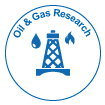Removal of heavy metals and Salmonella pathogens from sewage sludge using a novel chelating agent derived from succino-hydrazide and its reuse as a fertilizer
*Corresponding Author:
Copyright: © 2020 . This is an open-access article distributed under the terms of the Creative Commons Attribution License, which permits unrestricted use, distribution, and reproduction in any medium, provided the original author and source are credited.
Abstract
The direct use of sewage as fertilizers in agriculture without proper treatment has leaded to substantial economic environmental, and healthy ramifications. Proper treatment as well as adequate environmental management of sewage sludge is a necessity in order to eliminate the negative sequences of its utilization in the agriculture field. In this paper, a novel organic Schiff base chelator derived from hydroxybenzylidene succinohydrazide (HBSH) has been successfully synthesized and characterized by elemental analysis, 1H-NMR as well as infrared spectroscopy. The effect of sewage treated with varying concentration of the Schiff base chelator (0.8, 1.6 and 2.4 g/L) as well as the untreated sewage on the sludge solid reduction, removal of heavy metals and salmonella pathogens has been investigated. The implementation of raw as well as treated sludge on the growth as well as the heavy metal content of radish plant have been also investigated.

 Spanish
Spanish  Chinese
Chinese  Russian
Russian  German
German  French
French  Japanese
Japanese  Portuguese
Portuguese  Hindi
Hindi 


